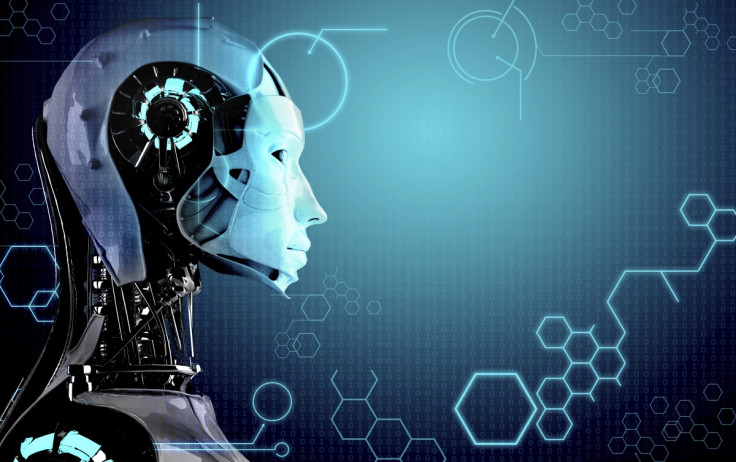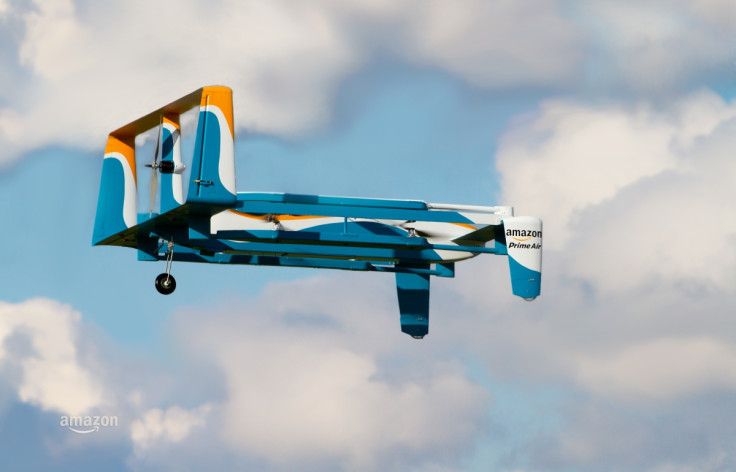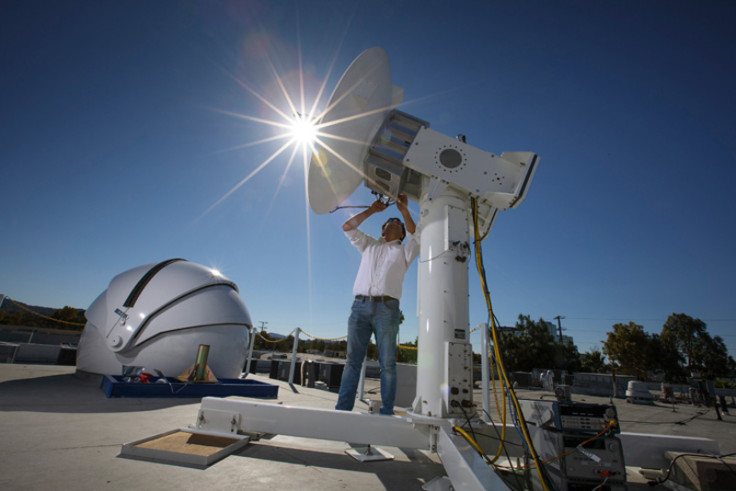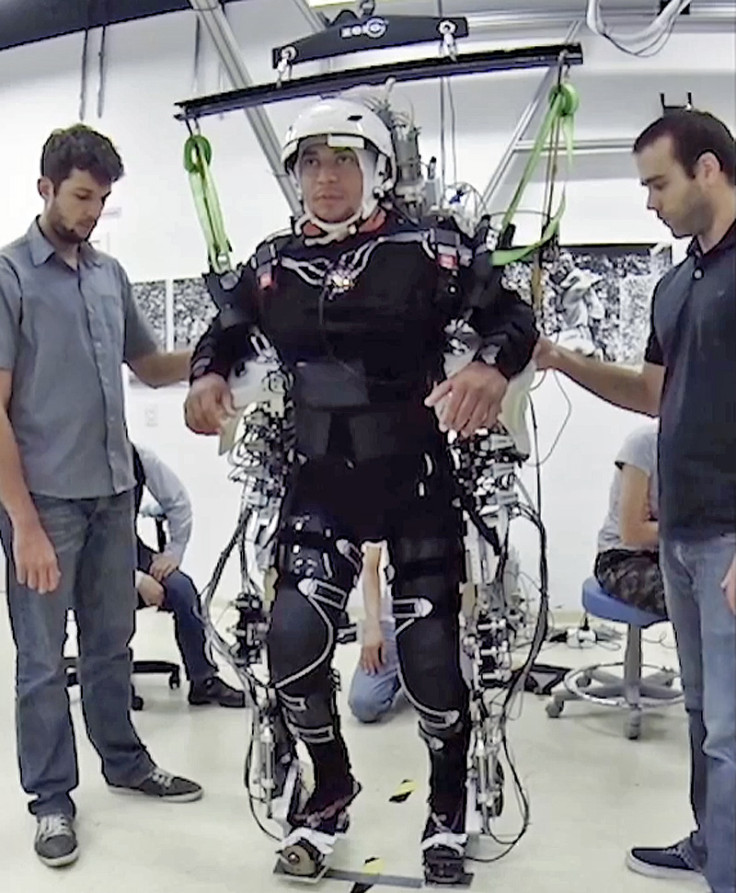The best technology breakthroughs in 2016 from quantum computing to AI
IBTimes UK explores the greatest advances in 2016, including AI, quantum computing, drones and mobile data.

This year has been rollercoaster crash for many with numerous tragedies and crises occurring all over the world, but it doesn't mean that everything was grim in 2016.
Join IBTimes UK as we take a closer look at the many new developments across various fields of technological research, each with the potential to revolutionise human life for the better.
Artificial intelligence

*The quest for artificially intelligent beings concerns both the inner workings of such machines, as well as how these machines are built. This section is devoted to the computer science research into replicating the human mind and helping computers solve complex tasks. For developments concerning the machines themselves, see our articles on robotics.
In 2016, computer scientists have begun concentrating more efforts on building deep learning neural networks which are large webs of artificially intelligent classical computers that are trained using computer algorithms to solve complex problems in a similar way to the human central nervous system, and where different layers examine different parts of the problem to combine to produce an answer.
It is incredibly difficult to replicate the human brain, so researchers are primarily focused on getting neural networks to solve a specific task, or teaching them to think in a particular way. For example, Google researchers have been working with physicists around the world in order to build a quantum version of a neural network that could help accurately predict chemical reactions.
US computer scientists have also managed to train a neural network to recognise faces from photographs, even if the images have been censored or blurred to hide the subject's identity. Meanwhile in Finland, researchers have used neurobiology to train a neural network to learn to recognise and detect patterns all by itself, just like a human child would.
Neural networks are also now being used in the real world — the hugely popular Prisma photo-editing app uses the technology to process pictures, as does Google's comic-reading app Google Play Books. Neural networks are also used in facial recognition apps and to help the CIA predict social unrest from trends in social media and the news.
Quantum computing

The quest to build an ultra-fast computer that can factor impossibly large numbers also ramped up this year, with multiple teams of computer scientists racing to solve the towering number of problems that must be overcome in order to enable quantum computing to be possible.
This year alone, Australian scientists have managed to develop the first ever qubit Fredkin gate (a universal gate required in all computing), while Oxford University has managed to develop quantum Fredkin gates that perform with record-breaking 99.9% precision.
In Israel, physicists researching light-based computers have managed to develop a device that can guarantee an endless series of entangled photons. The device is needed in order to fulfil a well-known mathematical concept for a quantum computer system.
Trapped ion quantum computers are also a popular field of research, and scientists from the University of Sussex have invented a much simpler method of building quantum gates which replaces laser beams with voltage applied to microchips.
And finally, as mentioned above, Google researchers have teamed up with US and UK scientists to demonstrate the first ever completely scalable quantum simulation of a chemical reaction, showcasing a real-world use for quantum computers which could revolutionise multiple areas of research into medicine and materials.
Drones

As small quadcopter drones continue to invade the consumer market, an increasing number of hypothetical use-cases for drones mentioned in 2015 are now being tested out in real-world scenarios.
One example is Amazon, which has been talking about drone deliveries to anyone who would listen for the last two years. In 2016, the online retailer put its money where its mouth is by releasing more information about its Amazon Prime Air drones, signing an agreement with the UK government and by starting trials of the technology at a secret testbed in Cambridgeshire.
Then there's Intel, which has been developing drones in order to showcase the power of the microchips inside them, and just launched Christmas drone light shows with Disney at the Florida Disney World resort over the holiday season.
Mobile operators around the world also have a keen interest in using drones to amp up mobile coverage in congested areas and emergency situations. In the US, AT&T is trialling drones tethered to the ground in order to create portable hovering small cells to improve 4G mobile data coverage at stadiums during big sporting events like the Super Bowl.
And in the UK, EE has successfully tested drones with Nokia as portable floating mobile base stations that can be quickly deployed in emergency situations and rural areas like the Scottish Highlands to provide temporary 4G mobile coverage.
The mobile operator is also applying to the UK government for permission to use drones to fly the materials needed to repair mobile base stations beyond line-of-sight to rural areas where physical mobile telecoms infrastructure problems cannot be easily fixed. The idea is to guide the drones using a wireless highway where small cells mounted on light houses help the drones navigate safely.
Wireless data transmission speeds

So you might think that the 4G mobile internet speeds you get on your smartphones are not bad already, but mobile operators and wireless scientists are constantly trying to improve speeds, because consumers are always hungry for more data or to access the latest content-heavy service.
Eventually, the results of this experimentation will make up the foundations of 5G, the next standard in mobile data coverage, but for now, as no one knows what 5G's specifications will be, each test is simply a demonstration of a new way to achieve high speeds wirelessly.
One of the most exciting demonstrations has been Facebook's record-setting demonstration transmitting data wirelessly at the speed of 20Gbps over a distance of 13km between California and Malibu using a technology called "millimetre waves". Prior to this, the previous world record for millimetre wave was set in May by German scientists who succeeded in transmitting data at the speed of 6GB/s over a distance of 37km.
There are also researchers who have set records for achieving the highest speeds of data transmission over millimetre wave ever achieved, such as electrical engineers from the University of Southern California Viterbi School of Engineering, who twisted radio beams in order to transmit data at a speed of 32Gbps, even though the distance was only 2.5m across a laboratory.
Japanese researchers are also focusing on unused parts of the radio spectrum to transmit mobile data at super-fast speeds, but rather than millimetre waves, they are looking at the sub-millimetre terahertz 275-305GHz frequency range. In February 2016 they managed to achieve 100Gbps over multiple data channels that each sent out 10-Gbps signals.
Exoskeletons
Superhuman strength might be an impossibility, but a non-invasive way to enhance existing human strength is not. In 2016, multiple companies and research institutions have announced the development of robotic exoskeleton suits.
Exoskeletons are strap-on suits that help workers who engage in heavy labour by being able to take on a large amount of weight without impacting the wearer. This would enable workers to be more productive because they can lift heavier loads, and this could also reduce work-related injuries.

Japanese electronics maker Panasonic has been developing robotic exoskeleton suits since 2015 and it is currently commercialising a set of three exoskeletons suitable for users who carry out heavy lifting in factories, the military or healthcare.
Car maker Hyundai is also keen to get involved due to the great benefit exoskeletons would have to the automobile industry, and to that end has developed a huge prototype robotic exoskeleton mech suit, as well as a smaller, pared-down version so injured and disabled people can walk better.
Researchers at the University of California Berkeley are working on exoskeletons to aid heavy lifting too and recently spun off into the startup SpinX to commercialise its technology. UC Berkeley's researchers have built multiple exoskeleton suits for the military and healthcare in the past, and it is keen to commercialise a three-module exoskeleton product that can be used separately or joined together to help workers in a range of industries.
And finally, neuroscientists and roboticists from Duke University and the Walk Again Project working to help paraplegics regain the ability to walk have published medical research showing that exoskeletons and virtual reality are successful in retraining the human brain to control muscles once again, to the extent that patients went from being "completely paralysed" to only "partially paralysed".
© Copyright IBTimes 2025. All rights reserved.






















